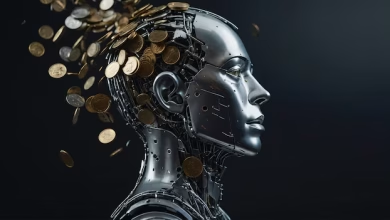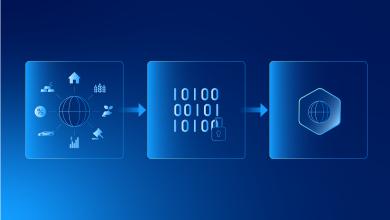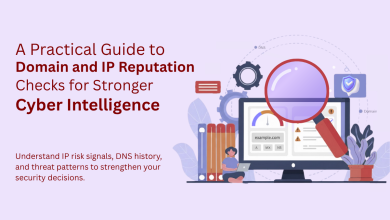
By early 2025, over 65 million Americans are expected to own digital cryptocurrencies, based on the cryptocurrency adoption and consumer sentiment report. As the cryptocurrency market grows, integrating AI and machine learning into trading strategies becomes increasingly essential.
These technologies enable faster and more accurate predictions, allowing traders to stay ahead of market trends and make informed decisions. Whether automating trades, analyzing market sentiment, or optimizing portfolios, AI is enhancing the efficiency and profitability of crypto trading. In this article, we’ll explore how these innovations revolutionize how people trade in the ever-evolving world of digital currencies.
How Does AI Help You Trade Crypto More Effectively?
AI crypto trading uses computer programs to buy and sell digital coins. These programs rely on price data, blockchain activity, and market news. Unlike human traders, they can process information at incredible speeds and make objective decisions free from emotional bias. Machine learning further enhances these systems by allowing them to adapt to new market conditions based on historical trends.
While automation can streamline many tasks in crypto trading, the ability to rapidly process and analyze vast amounts of data truly sets AI apart.
The benefits of AI and ML in crypto also include:
- Fast data analysis. AI processes large datasets.
- Reduced emotional errors. Algorithms stick to facts, not feelings.
- Great accessibility. Novices and experts can improve results through user-friendly tools.
AI’s progress matches the rise of digital assets. Registered advisors use automated tools to deliver more stable returns. AI gains trust when it shows clear and data-backed results.
Algorithmic Trading Foundations
Trading based on algorithms relies on programmed rules that execute trades automatically. These rules monitor price, volume, and time to determine optimal buying or selling points. While algorithms have long been used in finance, they offer unique advantages in the cryptocurrency market.
Developers gather and clean historical data from many sources. Then, they build models, ranging from simple equations to advanced neural networks, that predict price moves. The algorithmic trading market shows that about 40% of US mid-sized and large investment groups use this method to manage their crypto portfolios. That share should grow as more firms chase faster execution, lower costs, and fewer errors.
The core elements of algorithmic trading are the following:
- Data collection. Price histories, on-chain figures, regulatory news.
- Model building. Simple to complex AI frameworks for market signals.
- Execution logic. Clear triggers define when to buy or sell.
AI Trading Bots in Action
AI trading bots use these algorithms day and night. They constantly analyze market data to find ideal points of entry or exit. Because they never tire or panic, bots can handle sudden changes without the emotional aspect. Many bots rely on pattern recognition. They track order books, watch price flows, and act on small price mismatches across exchanges. However, bots need regular updates. Old models might fail to detect new patterns, resulting in losses.
AI-powered trading bots the next generation of high-frequency trading, as they:
- Scan the market 24/7
- React quickly to micro price changes
- Have a minimum of emotional bias
Why Trading Risk Management Matters
Crypto prices can swing; therefore, risk management is important. AI helps predict big moves by watching historical tendencies and live order book data. For instance, a bot might see a coin’s trading volume double in minutes and suggest a strong price move is near. Position sizing is a big part of this.
AI models calculate how much capital should go into each trade based on the asset’s volatility and liquidity. This approach limits the damage if many coins move together. Stop-loss strategies also benefit from AI, improving their effectiveness and adaptability. Rather than fixed numbers, an AI adjusts as the market changes. Real-time controls can cut losses by 15% more than static methods.
Some traders even use short-term personal loans to gain additional liquidity, but this approach requires careful risk management. AI-driven models can closely monitor loan exposure, adjusting trading positions in real time to prevent excessive leverage.
Primary points in crypto risk management:
- Adaptive stop-loss orders. Protect gains and limit losses in real time.
- Diversification. Spread out investments so one big drop doesn’t ruin everything.
- Steady updates. Markets shift daily, so risk models must develop.
Influence of Crypto Sentiment Analysis
The analysis of public sentiment in the cryptocurrency space gathers opinions from tweets, forums, and major news outlets. AI then filters these messages to see if people feel good or bad about a coin. This helps predict quick price swings. Investors can implement sentiment data into their trading programs. If the market turns negative for a certain coin, the program might reduce that position. If the tone is positive, they may buy more. Sentiment-based methods outperformed average returns in some hectic markets.
Institutional players also prize sentiment analysis. They watch places like Reddit or X (formerly Twitter) to track hype or warnings early. Spotting these clues first can lead to well-timed trades or stop orders. Combining sentiment data with AI risk tools combines human-like intuition with machine discipline.
The Future of Deep Learning for Trading
Deep learning is a part of AI that shows hidden connections in data. This approach is important in crypto because social chatter and major events can trigger sharp price changes. As computing costs drop, deep learning should become more accurate. Future models will likely simultaneously include global news, blockchain stats, and economic signals.
Some U.S. universities are working alongside AI labs to develop advanced predictive models tailored to crypto markets. Moreover, collaboration between academia and industry is growing. For example, Academic Labs uses AI and crypto to make quality education accessible worldwide. Such collaborations allow for the development of tools that benefit finance and provide greater access to advanced technology and education.
Deep learning trends to watch are:
- Multi-factor analysis. Integrate on-chain data, news, and market conditions.
- Quantum computing. Reduce calculation times and find micro-chances sooner.
- Academic-industry partnerships. Merge research with real trading needs.
Investors who keep up with the new pattern recognition and automated crypto trading can gain an edge. Strong AI models will remain central as more money flows into digital assets.






